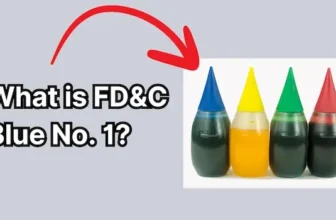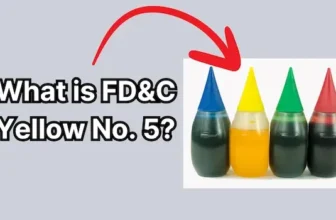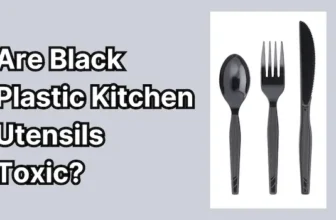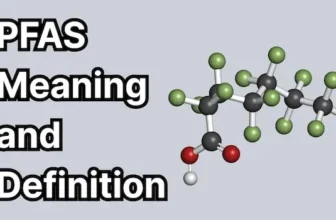Have you heard the term “Phthalates” lately on the internet or social media? As a scientist, I’m going to explain what “Phthalates” are, including their pronunciation, definition, and list of the types of phthalates to watch out for.
Phthalates are a large family of chemicals primarily used as plasticizers-substances added to plastics to increase flexibility, transparency, durability, and longevity.
Their most common application is in softening polyvinyl chloride (PVC), but they are found in a wide range of consumer products, from cosmetics and personal care items to food packaging and medical devices. (1🍃)
Because phthalates are not chemically bound to the materials they soften, they can leach into air, dust, food, and even our bodies through ingestion, inhalation, or skin contact. (2🍃)
Widespread human exposure to phthalates has raised significant concerns, as research links them to endocrine disruption and other potential health risks, prompting ongoing efforts to understand and reduce their impact on people and the environment.
Phthalates Pronunciation
Phthalates is pronounced “THAL-ates”, with the “Ph” being silent in the beginning.
“Thal” is pronounced like “pal”.
“Ates” is pronounced like “eights”.
History of Phthalates
| Year/Period | Event/Development |
| 1846–1870 | Early plasticizers: castor oil, then camphor |
| 1920s | Phthalates introduced as plasticizers |
| 1931 | PVC and DEHP commercialized, plasticizer industry booms |
| 1970 | Phthalate leaching into environment first observed |
| 1970s | Production exceeds 1 billion lbs; widespread use |
| 1970s–2010s | Environmental contamination increases |
| 2000s | Regulatory restrictions begin in US, EU, Canada |
| 2015 | Global production at 5.5 million tonnes |
| 2024–2025 | FDA/EPA risk evaluations and regulatory actions ongoing |
What Are Phthalates?
Phthalates are esters (organic compounds formed from an acid) of phthalic acid.
They are typically produced by reacting phthalic anhydride with various alcohols.
This process yields a spectrum of phthalates, each with distinct properties depending on the alcohol used.
Not all plasticizers are phthalates, but phthalates remain among the most widely used due to their effectiveness and versatility. (1🍃)
Between 90 and 95% of all phthalates are used as plasticisers for the production of flexible PVC. (1🍃)
List of Phthalates
| Name | Main Uses | Health Concerns |
| Diethyl phthalate (DEP) | Cosmetics, plastics | Endocrine disruption (under assessment) |
| Dibutyl phthalate (DBP) | Nail polish, PVC, adhesives | Reproductive toxicity, endocrine disruptor |
| Di(2-ethylhexyl) phthalate (DEHP) | PVC, medical devices | Reproductive toxicity, probable carcinogen |
| Diisononyl phthalate (DINP) | Flooring, toys | Some uses restricted |
| Diisobutyl phthalate (DiBP) | Cosmetics, plastics | Reproductive toxicity, endocrine disruptor |
Phthalates are a cornerstone of modern manufacturing but pose significant health and environmental challenges. Ongoing research and regulation aim to minimize their risks while encouraging safer alternatives.
What Are Phthalates Found in?
Phthalates are present in a vast array of products, including:
- Flexible plastics (e.g., vinyl flooring, shower curtains, toys)
- Cosmetics (nail polish, perfumes, hair sprays)
- Personal care products (shampoos, soaps, lotions)
- Food packaging and processing equipment
- Medical devices (tubing, blood bags)
- Household items (paints, adhesives, detergents) (4🍃)
The primary exposure to phthalates is from ingestion of foods, especially fatty foods such as milk, butter, and meats, but low-molecular-weight phthalates. (13🍃)
Ortho-phthalates, often simply called phthalates, are a group of chemicals that show up in all kinds of foods-from takeout meals to fresh fruits and vegetables.
These substances usually make their way into our food through packaging and processing tools, including materials like cellophane, paper, cardboard, and various plastics that touch what we eat. (14🍃)
PVC and Recycle Code #3
Avoid products marked with the number 3 inside the recycling symbol, as this indicates they contain Polyvinyl chloride (PVC).
PVC and phthalates are closely associated because phthalates are commonly used as plasticizers in PVC products.
Phthalates are integral to making PVC flexible, but their tendency to leach out of products raises significant health and environmental issues. (16🍃)

Phthalates Side Effects
Phthalates are recognized as endocrine disruptors-chemicals that interfere with hormone systems:
- Reproductive toxicity: Lower sperm count and motility in men, altered genital development in boys, and infertility in women. (5)
- Developmental concerns: Early puberty in girls, learning and behavioral disorders in children, and impacts on fetal development (6).
- Metabolic effects: Increased risk of obesity and type 2 diabetes, possibly due to hormone disruption. (6🍃)
Children, infants, and developing fetuses are especially vulnerable to phthalate exposure due to their developing systems. (6🍃)
Mechanisms of Hormonal Disruption
- Mimicking or Blocking Hormones: Phthalates can act like anti-androgens, disrupting the balance between hormones such as estradiol and testosterone, which can lead to abnormal cell proliferation and reproductive disorders. (10🍃)
- Interference with Hormone Production: Phthalates can increase the production of some hormones while decreasing others, leading to overall hormonal imbalances. (10🍃) For example, phthalates have been shown to down-regulate testosterone production and up-regulate estradiol in some cases. (10🍃)
Disruption of Hormone Signaling: Phthalates can interfere with hormone signaling pathways by binding to nuclear hormone receptors, thereby mimicking or altering the effects of natural hormones in the body. (11🍃)
- Epigenetic Modifications: Exposure to phthalates has been linked to changes in DNA methylation of genes involved in hormone regulation, which can affect gene expression and cell function, particularly in the placenta and developing embryo. (12🍃)
- Metabolic Pathways: Some phthalates disrupt arginine and proline metabolism, contributing to obesity and metabolic syndrome in children. (9🍃)
Additional Health Effects and Emerging Concerns:
- Neurological and Behavioral Effects: Recent studies suggest prenatal and early-life exposure to phthalates may be linked to learning, attention, and behavioral disorders in children, such as ADHD and reduced cognitive performance. (4🍃) Including this highlights the broader developmental risks.
- Thyroid Function: Phthalate exposure has been associated with altered thyroid hormone levels, which can impact metabolism and development, and has even been linked to thyroid cancer in some studies. (3🍃)
- Pregnancy Complications: Research has found phthalates in the urine of pregnant women, with links to complications such as anemia, preeclampsia, and low birth weight. (4🍃)
- Immune System Impact: Phthalates may impair immune function, increasing susceptibility to infections and potentially influencing autoimmune responses. (4🍃)
- Cancer risk: Some studies suggest links to breast cancer, bone cancer (osteosarcoma), and DEHP is classified as a probable human carcinogen. (6🍃)
- Other effects: Impaired immune function, respiratory and cardiovascular issues, and skin sensitization. (6🍃)
Environmental Impact
Phthalates are widely detected in the environment, including water, soil, and air, due to their extensive use and ability to leach from products.
They can accumulate in wildlife and have been shown to affect aquatic organisms, raising concerns about their broader ecological effects. (7🍃)
Regulation and Risk Management
Due to mounting evidence of health and environmental risks, regulatory agencies have taken steps to limit phthalate use:
- The U.S. Environmental Protection Agency (EPA) and the European Union have restricted or banned certain phthalates, especially in children’s toys, cosmetics, and food-contact materials. (8🍃)
- Some phthalates are classified as reproductive toxicants and endocrine disruptors, with ongoing assessments for further restrictions. (1🍃)
- Manufacturers are increasingly replacing lower-molecular-weight phthalates with alternatives, including higher-molecular-weight phthalates and non-phthalate plasticizers. (8🍃)
Despite these measures, phthalates remain pervasive, and exposure is virtually unavoidable in daily life. (9🍃)
How to Identify Phthalates in Products
- Read product labels and choose items labeled “phthalate-free.”
- Avoid plastics marked with recycling codes 3 or “PVC.”
- Limit use of fragranced personal care products, as phthalates are often used to stabilize scents.
- Choose glass, stainless steel, or ceramic containers for food storage.
- Wash hands frequently, especially before eating, to reduce ingestion of phthalate-containing dust. (9🍃)
Phthalates Uncovered: The Hidden Chemical in Everyday Foods | Dr. Oz | S6 | Ep 32 | Full Episode
What really resonated with me was the experiment Dr. Oz conducted with ten women, none of whom had heard of phthalates before the show; yet half of them tested positive for these chemicals in their bodies
The episode highlighted the potential health risks, including links to endometriosis, weight gain, respiratory issues, and even brain and behavioral changes in children
It was eye-opening to realize that even when we think we’re making healthy choices for ourselves and families, we might still be unknowingly exposed to these hidden chemicals.
Dr. Oz provides actionable advice, such as choosing lower-fat dairy products (since phthalates concentrate in fat), reducing the use of plastic containers for food storage, and being mindful of product labels.
He stressed that while eliminating exposure entirely may be unrealistic, reducing it is possible and beneficial.
Examples of PFAS-Free Products and Brands
Clothing and Outdoor Gear:
- Harvest & Mill: makes 100% organic cotton apparel that is explicitly free from phthalates, azo dyes, flame retardants, and other harmful chemicals.
- Everlane: uses organic cotton and bio-based materials; their stretch denim uses Roica V550 yarn, made without harmful chemicals, including phthalates.
- MATE the Label offers organic clothing that is free from endocrine disruptors, which include phthalates.
- Pact: produces organic cotton basics and avoids harmful chemicals, including phthalates.
- Outerknown: focuses on natural fibers and responsible production, avoiding harmful chemicals such as phthalates.
Personal Care Products:
- Fenty Skin has a comprehensive “No-No” list that bans phthalates in all skincare products, and Fenty Beauty makeup also restricts phthalates and parabens.
- Sappho New Paradigm: is a vegan, organic cosmetics line explicitly free of known carcinogens and endocrine disruptors, including phthalates.
- AXIOLOGY: offers cosmetics that are tested to be free of phthalates and other harmful chemicals.
Furniture and Home Textiles:
- PlushBeds mattresses and bedding are GreenGuard Gold and CertiPUR-US certified, ensuring they are free of prohibited phthalates, heavy metals, and other toxins.
- The Futon Shop uses organic cotton, wool, and FSC-certified wood, eliminating harsh chemicals and synthetic ingredients, including phthalates.
Foodware and Packaging:
- BPI-certified compostable packaging ensures no intentionally added phthalates in compostable foodware.
Cookware:
- Ceramic, glass, stainless steel, and cast iron cookware are naturally phthalate-free and safe alternatives to nonstick cookware, which may contain plasticizers.
- Brands like GreenPan, Caraway, and Nordic Ware offer ceramic-coated cookware that is free of phthalates, PFAS, and other harmful chemicals.
Cleaning Products:
- EPA Safer Choice certified products are screened for phthalates and other harmful substances. Brands like QuickShine, Presto and SimpleGreen.
- EcoLogo and Green Seal certifications restrict or ban phthalates in cleaning products.
References
- Phthalates – Wikipedia. (2025, April 4). Retrieved from https://en.wikipedia.org/wiki/Phthalates
- United States Environmental Protection Agency (EPA). Risk Management for Phthalates. Retrieved from https://www.epa.gov/assessing-and-managing-chemicals-under-tsca/risk-management-phthalates
- Benjamin, S., et al. (2017). Phthalates and Their Impacts on Human Health. Journal of Hazardous Materials. As summarized by Food Packaging Forum. Retrieved from https://foodpackagingforum.org/news/phthalates-impact-on-human-health
- Environmental Working Group. What are phthalates? Retrieved from https://www.ewg.org/what-are-phthalates
- Vital Record. Phthalates: What you should know about these common toxins in beauty products. https://vitalrecord.tamu.edu/
- National Center for Health Research. What Are Phthalates and How Do They Affect Your Health? https://www.center4research.org/what-are-phthalates/
- García‐García, M., et al. (2021). Analysis of the impact of three phthalates on the freshwater gastropod Physella acuta at the transcriptional level. Scientific Reports, 11, Article 11511. Retrieved from https://pubmed.ncbi.nlm.nih.gov/34075110/
- United States Environmental Protection Agency (EPA). Phthalates – EPA. Retrieved from Risk Management for Phthalates | US EPA
- Benjamin, S., et al. Phthalates and Their Impacts on Human Health. PMC. Retrieved from Phthalates and Their Impacts on Human Health – PMC
- Endocrine Society. Plastics, EDCs & Health: Authoritative Guide. Retrieved from Endocrine Society
- ScienceDirect. Phthalates and their effects on human health: Focus on erythrocytes and the reproductive system – ScienceDirect
- Scientific Reports. Exposure to Phthalate, an Endocrine Disrupting Chemical, Alters the First Trimester Placental Methylome and Transcriptome in Women | Scientific Reports
- ScienceDirect. Phthalates: Toxicology and exposure – ScienceDirect
- Environmental Defense Fund. Retrieved from Phthalates in food
- Campaign for Safe Cosmetics. Phthalates, Beauty Products & the FDA. Retrieved from https://safecosmetics.org/wp-content/uploads/2022/08/Not-Too-Pretty.pdf
- Plastic #3 (PVC) Plastic #3 (PVC) – Athens Services 3-Bin Program
Read Next
Top 10 Best Non-Toxic Candles in 2025

Top 10 Best Non Toxic Laundry Detergents
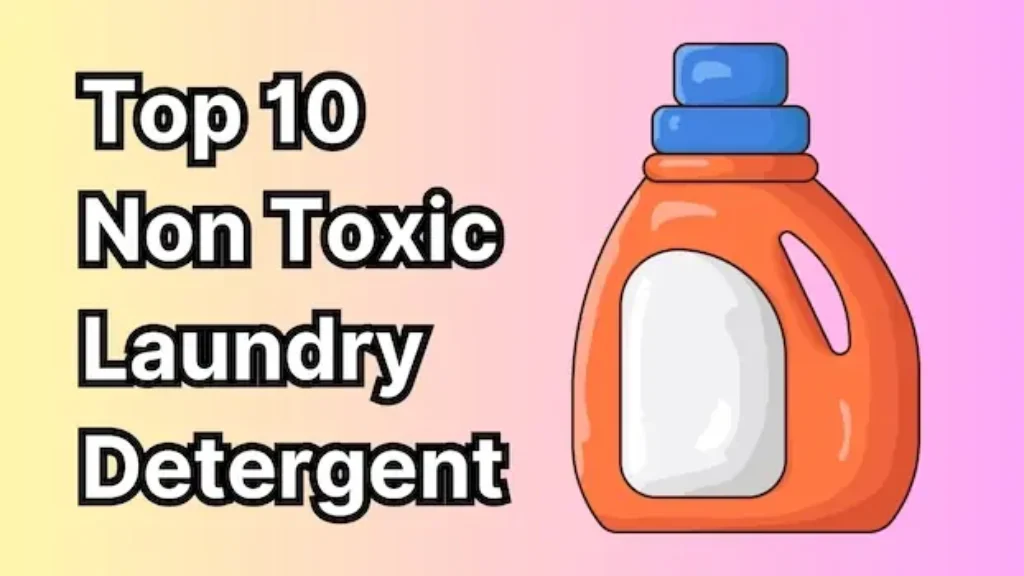
What is FD&C Red 40 Made of and its Side Effects?

What Is Yellow 5 (Tartrazine) and is it Bad for You?
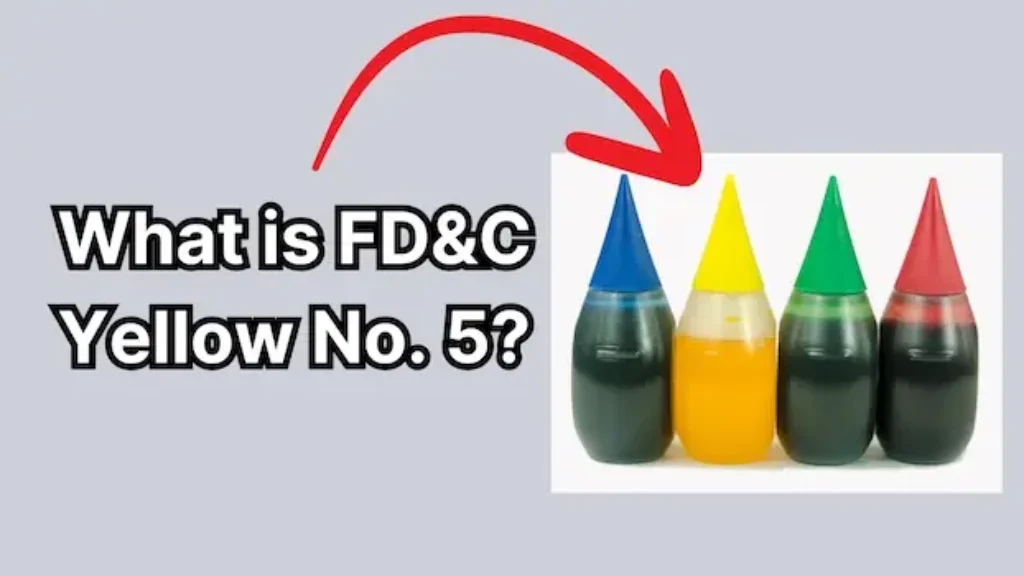
What are Parabens & Why are They Bad? From a Scientist
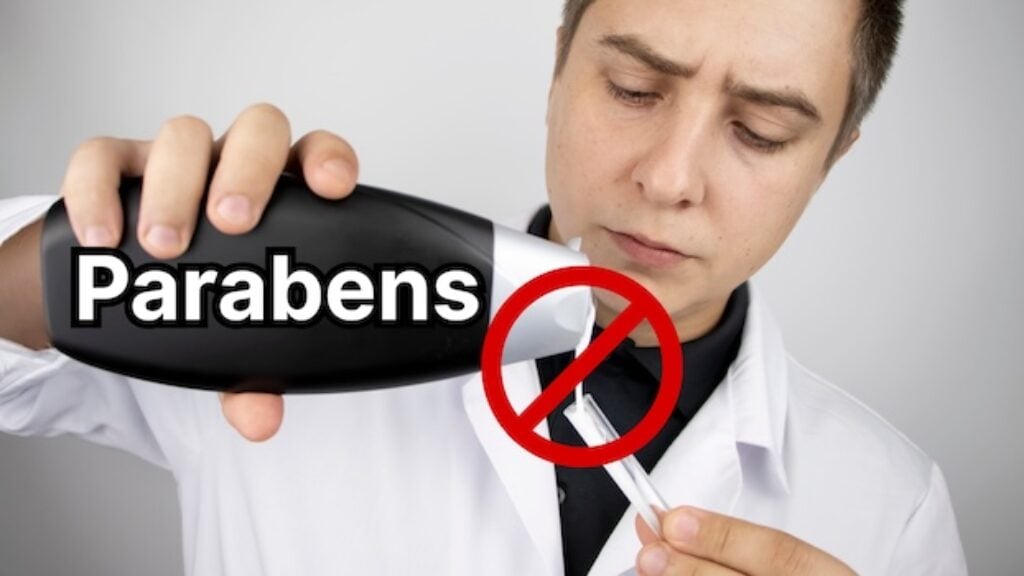
PFAS: Meaning, Definition, and How to Avoid
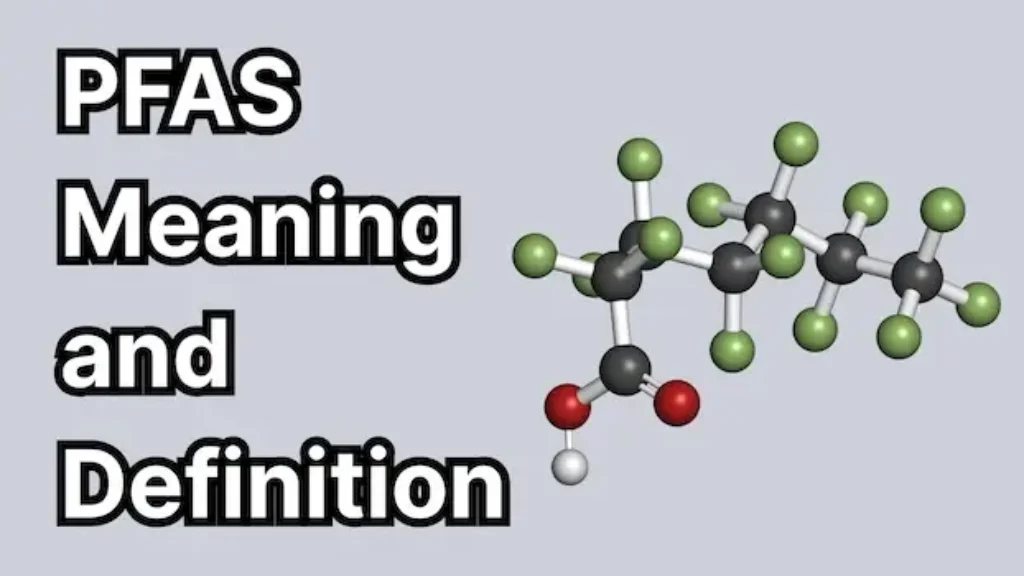
What is Fragrance Made of? Ingredients List & Health Risks
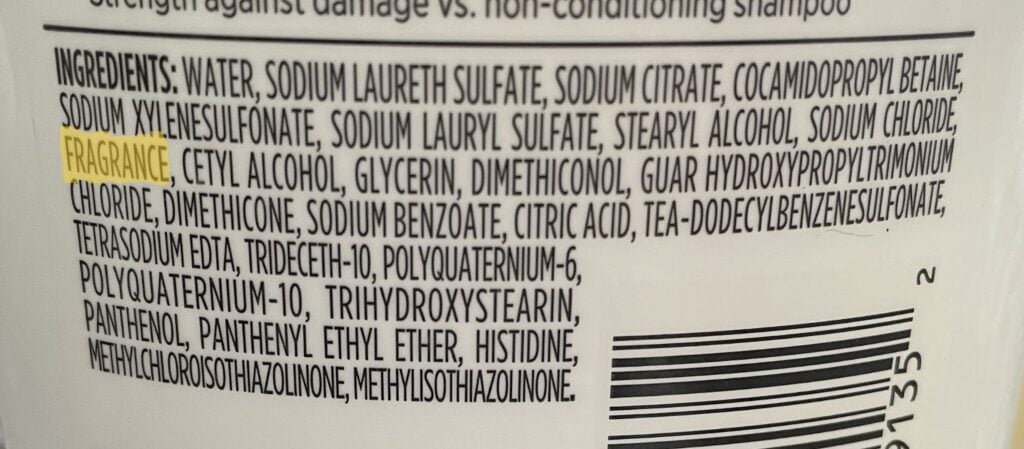
What Is FD&C Blue 1 and is it Bad for You?

Are Black Plastic Kitchen Utensils Toxic?

